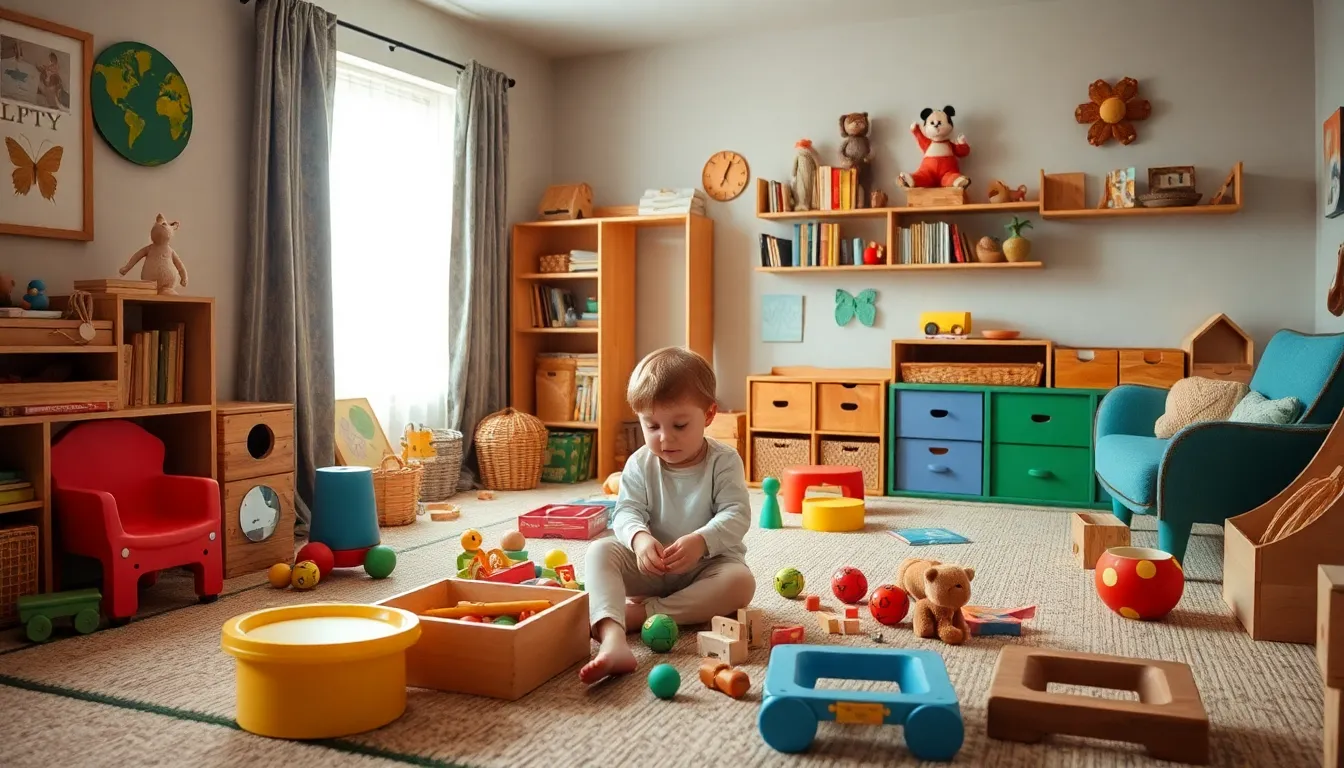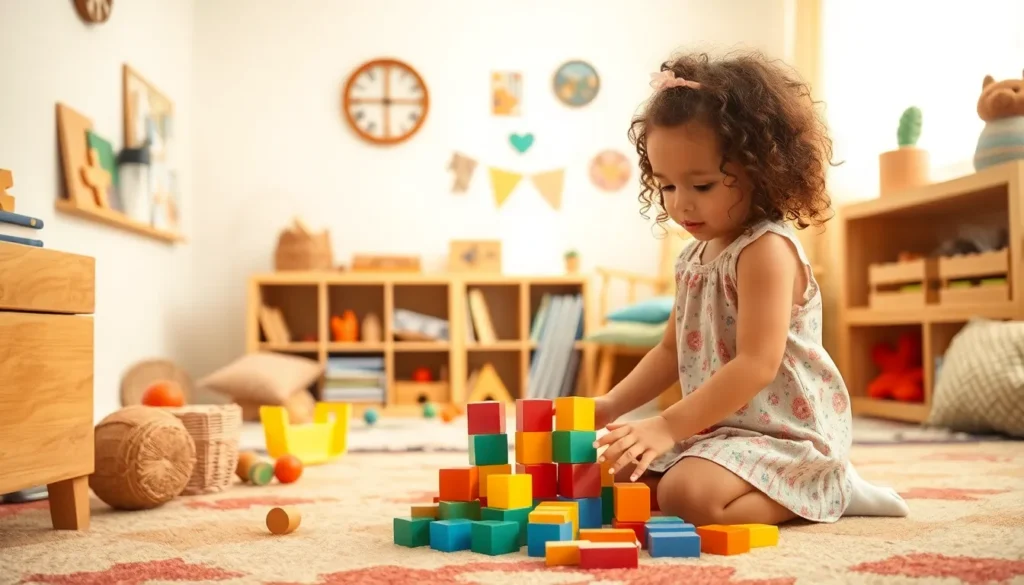Table of Contents
ToggleTransforming a home into a Montessori haven might sound like a daunting task, but it’s easier than teaching a cat to fetch! With a sprinkle of creativity and a dash of organization, anyone can embrace this child-centered approach to learning right in their living room. Imagine a space where curiosity reigns supreme and every corner invites exploration.
Understanding Montessori Philosophy
Montessori philosophy centers on fostering independence and a love for learning. It recognizes that children thrive in environments that cater to their natural curiosity.
Key Principles of Montessori Approach
Child-led learning serves as a cornerstone. Children choose activities that resonate with their interests, promoting engagement. Prepared environments empower exploration, allowing children to interact with materials at their own pace. Mixed-age classrooms enhance social development, encouraging collaboration and mentorship among children. Educators observe rather than direct, guiding subtly to foster autonomy.
Benefits of Montessori Education at Home
Fostering independence forms a key benefit of Montessori education. Children develop self-discipline through choices and routines. Enhancing critical thinking skills occurs via hands-on learning experiences. Learning in a personalized manner meets individual needs, accommodating various learning styles. Cultivating social skills happens naturally, as children interact freely in a cooperative environment.
Setting Up a Montessori Environment

Creating a Montessori environment at home promotes independence and exploration. This setup encourages curiosity, allowing children to interact with their surroundings.
Creating a Prepared Space
A prepared space enables children to engage freely and confidently. Set up different areas for various activities, such as reading, art, and practical life skills. Ensure materials are accessible so kids can choose freely. Arrange furniture to encourage movement and exploration. Items should be child-sized, fostering a sense of ownership. Designate specific areas for activities, preventing distractions. A quiet corner for reading supports concentration. Frequent adjustments help maintain an inviting environment.
Choosing Montessori Materials
Selecting appropriate materials enhances the Montessori experience. Focus on open-ended toys that encourage creativity and problem-solving. Choose items made from natural materials like wood, which provide tactile experiences. Incorporate real-life tools, such as small kitchen utensils, to foster practical skills. Offer sensory materials like sand or water for hands-on learning. Include books that reflect children’s interests and multicultural perspectives. Select puzzles to develop fine motor skills and critical thinking. Prioritize quality over quantity to maintain an organized, engaging space.
Implementing Montessori Practices
Implementing Montessori practices at home creates a nurturing atmosphere for children. This approach emphasizes daily routines and activities tailored to foster exploration and learning.
Daily Routines and Activities
Daily routines structure a child’s day, offering familiarity and opportunities for learning. Morning tasks might involve setting the table for breakfast, allowing children to participate in family activities. During the day, engage kids in activities like gardening, cooking, or organizing toys, which support their development. Evening routines can include quiet reading time, promoting relaxation while developing literacy skills. Ensure materials for activities remain accessible, encouraging self-directed exploration. Consistent routines build confidence and help children develop a sense of responsibility.
Encouraging Independence and Choice
Encouraging independence in children enhances their decision-making skills. Providing choices, like selecting outfits or choosing snacks, fosters confidence and ownership. Design spaces with accessible materials, allowing kids to reach for what they need without asking for assistance. Offer real-life tools, such as a small broom or a child-friendly knife, fostering practical life skills. Setting boundaries for safety helps children feel secure while exploring their independence. Believe in their abilities; this mindset nurtures perseverance and resilience in various tasks.
Challenges and Solutions
Setting up a Montessori environment at home presents unique challenges. Understanding these hurdles allows for effective strategies to overcome them.
Common Obstacles in Montessori at Home
Limited space can make it difficult to create distinct activity areas. Distractions from electronics often compete with hands-on learning activities. Inconsistent routines disrupt the structure children benefit from. Parents might also lack confidence in implementing Montessori principles without formal training. Budget constraints could limit access to authentic Montessori materials. Such obstacles, while significant, are common among families adapting to this approach.
Tips for Effective Implementation
Start by identifying dedicated spaces for specific activities like reading or art. Establish a consistent daily routine, incorporating time for exploration and learning. Select a few quality materials that encourage engagement instead of focusing on quantity. Utilize everyday items for practical activities, as they can enhance learning experiences. Encourage child-led choices, allowing them to select their activities and materials. Maintain flexibility, adjusting the environment and routines as needed based on the child’s interests and developmental stage.
Creating a Montessori-inspired environment at home opens up a world of exploration and independence for children. By thoughtfully organizing spaces and selecting appropriate materials, parents can foster a love for learning that aligns with each child’s natural curiosity. Implementing daily routines and encouraging child-led choices further enhances this nurturing atmosphere.
While challenges may arise in the process, the benefits of cultivating a Montessori home far outweigh the obstacles. With creativity and commitment, parents can transform their homes into vibrant learning environments that support their children’s growth and development. Embracing this approach not only enriches children’s lives but also strengthens the parent-child bond through shared experiences and discoveries.







